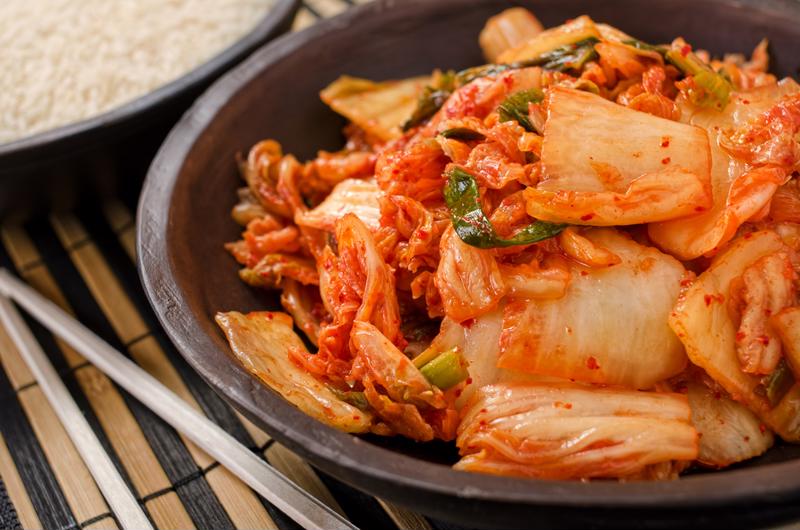As the most recent state to join the union and the only one composed entirely of islands, Hawaii is distinct from the rest of the U.S. in many ways. The food available on the Hawaiian islands reflects a rich and diverse culture, inspired by the islands’ natives and immigration from Asia.
If you are attending culinary academy, it is important to learn as much as you can about the tremendous variety of traditional cuisines available in the U.S. By exploring some signature Hawaiian foods, you will discover an array unique ingredients, flavors and cooking techniques. Here are are just a few of the state’s most beloved dishes to get you started:
Poi
The history of poi traces back to the ancient culture of native Hawaiians. This Polynesian staple food is a paste prepared by baking or steaming the starchy taro root and then mashing it. While fresh poi is mildly sweet, NPR explained that the flavor grows sour after a day or two due to fermentation. Thereafter, sour poi can be stored for long periods without spoiling and is often served with salted fish.
Poke
Found all over Hawaii, poke combines chunks of raw fish, seaweed, roasted kukui nut and sea salt, often atop a bed of rice. According to Bon Appetit, the fish is most commonly tuna cut into cubes and marinated in sesame and soy sauce. However, there are countless variations available.
Da Poke Shack in Kailua-Kona is one of the best-known purveyors of its namesake dish, and its menu illustrates the range of possible flavor profiles. The restaurant offers a spicy version called Pele’s Kiss, another made with avocado aioli named Dynamite and the sweet Shack Special, to name a few.
Recently, restaurants across the country have revealed their own takes on poke. Onomea, a Hawaiian restaurant in Brooklyn, makes a straightforward appetizer with ahi tuna, onions, seaweed and sesame seeds. Noreetuh in Manhattan, on the other hand, serves a more adventurous variety, featuring macadamia nuts and pickled jalapenos.
 Kimchi is a Korean dish with longstanding popularity in Hawaii.
Kimchi is a Korean dish with longstanding popularity in Hawaii.Kimchi
Kimchi, a dish of seasoned and fermented vegetables, came to Hawaii from Korea. There are over a hundred different types of kimchi, but Hawaiian varieties tend to be milder than the spicier Korean plates. The Kitchn suggested that those preparing the dish for the first time start with a mak (“everyday” in Korean) kimchi with napa cabbage. Other vegetables commonly used to make kimchi include radish, cucumbers and scallions.
Begin by salting and rinsing the cabbage. Then add flavor by rubbing in a paste made from variety of seasonings, depending on the season and personal taste. Common choices include ginger, garlic, chili peppers, sugar and seafood flavoring, such as oysters, fish sauce or salted shrimp paste.
After you’ve worked the paste into the cabbage, it’s time to begin the pickling process, called lacto-fermentation. This involves immersing the cabbage in brine to kill unwanted bacteria, leaving behind Lactobacillus bacteria. These microorganisms preserve and flavor the vegetable.The kimchi should allowed to ferment in the briny jar for a few days at room temperature until it reaches the desired taste.
Lomi-lomi salmon
A salad featuring salmon and tomato, this dish’s name comes from its means of preparation. Lomi-lomi means “massage” in the native Hawaiian language. According to Cooking Light, the traditional recipe calls for rubbing salt onto the salmon and then massaging the fish together with tomato and onions.
“Lomi-lomi salmon has become a Hawaiian tradition.”
Lomi-lomi salmon is often served on ice to keep it cold, moist and fresh-tasting. The Polynesian Cultural Center stated that, though salmon are not native to the area, western sailors first brought the fish to the islands centuries ago. The salad has thus become a Hawaiian tradition and is regularly served at luaus.
Musubi
Hawaii has a longstanding affection for spam. The Dallas Morning News reported that the state tops the nation in consumption of the meat product, purchasing cans at a rate of over 7 million a year. Spam became popular on the islands in World War II, and it has been put to many creative culinary uses since, most notably musubi.
Musubi is prepared in a fashion similar to the Japanese rice balls called onigiri. A strip of nori, or seaweed, attaches sushi rice to a slice of spam. While musubi is widely available as a convenience store snack, restaurants like Musubi Cafe Iyasume in Honolulu and Tanioka’s Seafood and Catering in Waipahu are renowned for their delicious exemplars of the dish.



